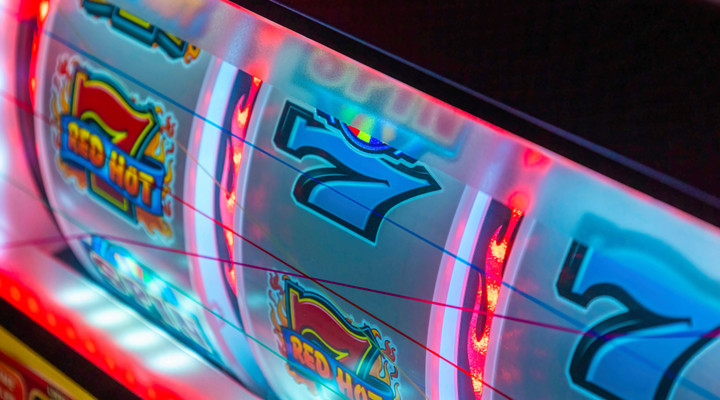Understanding variance in betting: Why even good bettors experience losing streaks

The world of sports betting is filled with success stories of professional bettors who make consistent profits over time. Yet even the most skilled and disciplined bettors inevitably experience losing streaks that can test their resolve, strategy, and bankroll management.
This seemingly contradictory reality isn't a flaw in their approach—it's the natural result of variance, a fundamental mathematical concept that governs all probabilistic outcomes.
Check out the best UK bookmakers to claim free bets worth up to £850!
What is variance in betting?
In statistical terms, variance measures how far individual results in a set tend to deviate from the expected average outcome. For bettors, variance represents the natural ups and downs that occur even when making mathematically advantageous wagers.
It's the reason why short-term results can diverge dramatically from long-term expectations.
Read: Sports betting trends to watch out for in 2025
Think of variance as the turbulence on an airplane journey. The plane has a planned flight path (your expected value), but atmospheric conditions create constant minor deviations.
Sometimes these deviations cluster together, causing extended periods of roughness—these are your losing streaks.
Expected value vs. actual results
Successful betting hinges on finding positive expected value (EV)—situations where the potential payoff exceeds the risk over time. A bettor who identifies wagers with a 53% probability of winning at even-money odds has a clear edge.
However, this advantage only guarantees profitability over a sufficiently large sample size.
Consider a coin that lands heads 53% of the time. If you bet on heads repeatedly:
- After 10 flips you could easily see 3-7 heads (30% success)
- After 100 flips you might see 47 heads (still below 50%)
- After 1,000 flips you'll likely see closer to 530 heads (approaching the expected 53%)
- After 10,000 flips your results will almost certainly cluster tightly around 53%
This illustrates why short-term results can be wildly misleading about your actual edge.
A bettor who correctly identifies 53% winners might still lose 10 straight bets—a scenario that will occur naturally about once every 700 series of 10 bets.
The mathematics of losing streaks
Even with a significant edge, losing streaks are mathematically inevitable. Consider a top-tier sports bettor with a remarkable 57% win rate on point spread bets (well above the ~52-53% breakeven point when paying standard -110 vig).
The probability of this skilled bettor losing N consecutive bets can be calculated as (1 - 0.57)^N:
- Losing three straight: 7.9% (happens about once every 13 series of 3 bets)
- Losing five straight: 3.4% (happens about once every 30 series of 5 bets)
- Losing 10 straight: 0.11% (happens about once every 900 series of 10 bets)
While a 10-bet losing streak seems rare at 0.11%, consider an active bettor making 500 bets per year.
This bettor can expect to experience a 10-bet losing streak approximately once every two years—despite being significantly more skilled than the average bettor.
The psychological impact of variance
The human mind is poorly equipped to process probability and randomness intuitively.
We're pattern-seeking creatures who struggle to accept that clusters of negative outcomes can occur randomly without indicating a flawed strategy. This cognitive bias leads to several common mistakes:
- Result-oriented thinking - judging the quality of a bet based on whether it won or lost, rather than whether it had positive expected value.
- Recency bias - overweighting recent results and undervaluing long-term data.
- Emotional decision-making - making larger bets to "get back" losses or abandoning sound strategies after a losing streak.
- Confirmation bias - selectively remembering predictions that came true while forgetting those that didn't.
Professional bettors combat these psychological pitfalls by meticulously tracking results, focusing on process over outcomes, and understanding that variance is an unavoidable aspect of their profession.
Bankroll management: the variance shield
While variance cannot be eliminated, its impact can be mitigated through proper bankroll management. This is why professional bettors typically risk only 1-3% of their total bankroll on any single wager, regardless of how confident they feel.
Much like micro-stakes betting being great for beginners, this conservative approach serves two critical purposes. Firstly, it protects against the mathematical certainty of losing streaks, but it also provides psychological insulation from the emotional impact of losses, which could lead to mental health issues.
A bettor who risks only 2% per play can withstand a 10-bet losing streak and lose only about 18% of their bankroll. By contrast, someone betting 10% per play would lose nearly 65% of their bankroll during the same streak—a devastating blow that might end their betting career.
Identifying bad luck vs bad strategy
One of the most challenging aspects of betting is distinguishing between variance (or what some of us call bad luck) and a fundamentally flawed approach. Professional bettors focus on several metrics beyond simple win-loss records.
When evaluating your betting strategy during a downturn, examining closing line value provides critical insight into your true edge.
Consistently securing better numbers than the closing line indicates you're identifying value before the market fully adjusts, which research has shown correlates more strongly with long-term profitability than short-term results.
This metric helps differentiate between a sound approach experiencing variance and a fundamentally flawed strategy.
Comparing expected wins against actual results offers another powerful diagnostic tool. By tracking how often you should win based on pre-game probabilities and comparing it to your actual win rate, you can identify whether you're experiencing normal variance or systematic errors in your handicapping process.
This analysis helps reveal if you're correctly assessing probabilities even when results temporarily suggest otherwise.
Sample size considerations cannot be overstated when evaluating betting performance. Small samples—even dozens of bets—are statistically insignificant and prone to misleading variance.
Professional bettors patiently track performance across hundreds or thousands of wagers before drawing meaningful conclusions about strategy effectiveness. It's why the question of whether short-priced value picks are really actually worth it or not will always be debated.
Making major adjustments based on limited data often compounds problems rather than solving them, as you might abandon profitable approaches simply experiencing natural downswings.
The foundational quality of your handicapping process ultimately determines long-term success beyond any short-term outcome patterns.
Scrutinise whether your methodology relies on valid statistical principles, objective data analysis, and logical reasoning rather than subjective narratives, recent memories, or emotional reactions.
Even during winning periods, a process built on hunches may succeed temporarily through luck. During losing streaks, a mathematically sound approach may simply be understanding inevitable variance that will correct over time.
Strategies for weathering variance
When inevitable losing streaks occur, successful bettors employ several strategies:
- Maintain bet sizing discipline - resist the urge to increase bet sizes to recover losses more quickly.
- Review processes, not outcomes - evaluate whether your methodology remains sound rather than focusing on recent results.
- Embrace transparency - track all bets with detailed records to provide objective feedback.
- Expand your sample - sometimes the best response is simply to keep making +EV bets and allow the larger sample size to smooth out variance.
- Consider multiple sports/markets - diversifying across uncorrelated betting markets can reduce overall portfolio variance.
The natural process not the enemy
Variance isn't just a challenge in betting—it's an intrinsic feature of the landscape that affects everyone from beginners to the world's sharpest professionals.
Understanding and accepting variance transforms how you perceive winning and losing streaks, enabling you to make more rational decisions.
The hallmark of a truly skilled bettor isn't the ability to avoid losing streaks—it's the capacity to weather them with discipline, perspective, and unwavering commitment to proven strategies.
By embracing variance as a natural part of the betting process rather than an enemy to be conquered, you develop the mindset necessary for long-term success in one of the world's most challenging endeavours.
And remember - your results over 50 bets tell you almost nothing about your skill, but your approach over 5,000 bets reveals almost everything!






 REVEALED: 11 biggest betting events around the world
REVEALED: 11 biggest betting events around the world
 UK free bets in 2025 – how to maximise your sports bonus
UK free bets in 2025 – how to maximise your sports bonus
 Starting small: Why micro-stakes betting is perfect for beginners
Starting small: Why micro-stakes betting is perfect for beginners
